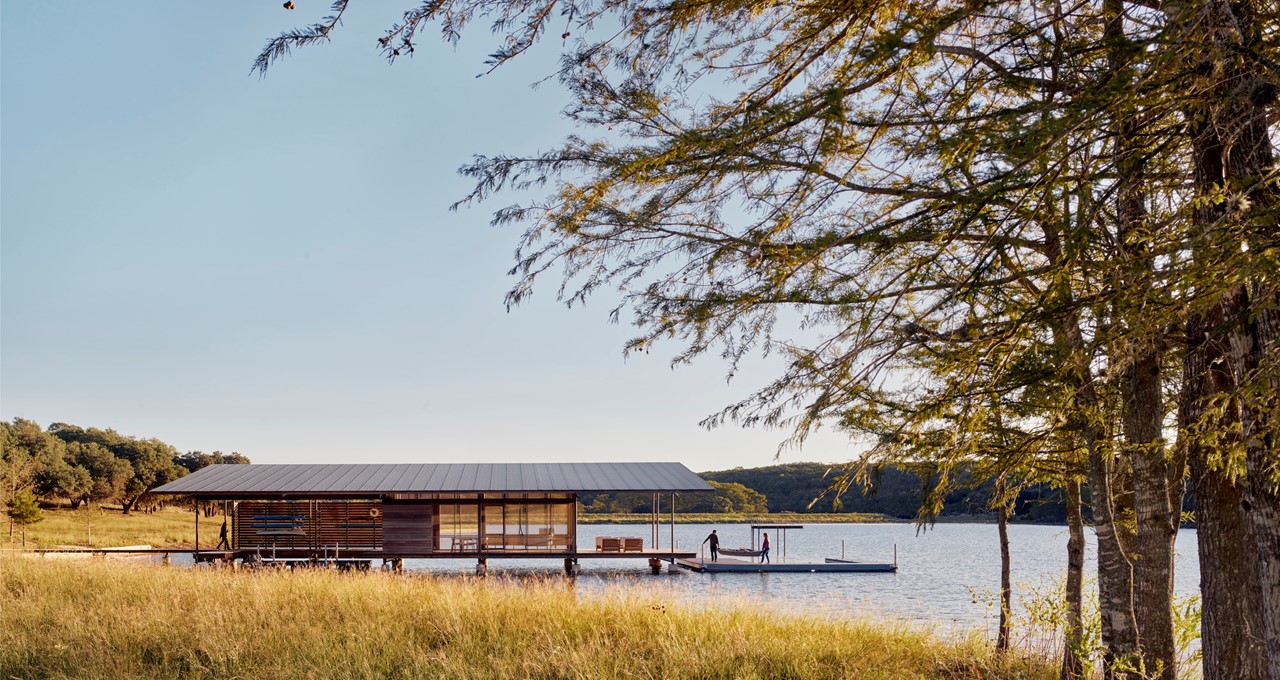For rapidly expanding businesses, the growing pains often extend to their IT infrastructure. Award-winning architecture firm Lake|Flato is addressing this issue with a dose of NVIDIA RTX graphics and virtualization technologies.
Founded in 1984, the San Antonio-based company is a leader in sustainable design. It brought a similar approach to meet its burgeoning technology needs by making sure upgrades provided more performance for more users while minimizing energy consumption.
Lake|Flato currently has 135 employees, many of whom are power users of programs such as Autodesk AutoCAD and Revit and Enscape, and it’s looking to expand to 200 employees. With its PCs consuming about 300 watts each, electrical upgrades would’ve cost the company about half a million dollars.
Instead, with the help of IT services company Whitehat Virtual Technologies, Lake|Flato tested virtual desktop infrastructure powered by NVIDIA A40 GPUs combined with NVIDIA RTX Virtual Workstation (vWS) software. The setup achieved similar performance running the energy-intensive apps in a virtualized environment as their current NVIDIA RTX-powered desktop workstations.
“The NVIDIA RTX vWS-enabled VDI solution powered by NVIDIA A40 has nearly the same overall performance compared to our dedicated workstation-grade desktops, and only uses a fraction of the power,” said Dan Stine, director of design technology at Lake|Flato.
In the wake of the successful test, the company is looking to expand its VDI infrastructure with A40 GPUs to provide their employees with powerful workstations, so they can run workflows from anywhere.
The Proof Is in The Process
Lake|Flato previously used servers with older generation cards. To support up to 200 users in a VDI environment, its goal was to stay under 135 watts per user and provide an equivalent experience to RTX-powered desktops.
Proofs of concept typically take months or even years to complete, and sometimes fail altogether due the complexity of VDI. But Whitehat built a server with A40 GPUs in less than a week after its initial meeting with Lake|Flato. Immediately after that, the firm was able to start testing Revit and Enscape on the NVIDIA RTX Virtual Workstations.
Running the apps in the A40-powered virtual machines reduced power consumption per person by 70 percent — while achieving the same performance as their physical RTX-powered desktops.
The PoC was successfully completed in just over a month and enabled Lake|Flato to test NVIDIA’s latest VDI technologies so it can better plan a future company-wide implementation.

NVIDIA RTX Real-Time Rendering Boosts Design Workflows
Virtualization wasn’t the only move Lake|Flato made. To improve its remote work environment, the company deployed NVIDIA Quadro RTX 5000 graphics into its Dell Precision desktops.
With these, its designers can easily visualize their projects daily, develop design solutions and create presentations for clients and stakeholders.
The RTX 5000 provided noticeable gains in performance and speed, including a 66 percent performance increase when using real-time rendering in Enscape, compared to the previous generation GPU.
The desktops also provide a 16GB framebuffer, which allows Lake|Flato to open large projects in Enscape without removing portions of the model to reduce the poly count or number of textures.
“Using NVIDIA RTX GPUs with sufficient framebuffers is key to powering a smooth, comfortable experience — on screen or in virtual reality,” said Stine. “With real-time rendering, we can easily simulate and visualize various designs for energy and environmental performance.”
Hear more from Lake|Flato in an upcoming webinar on Sept. 9, when Dan Stine will join NVIDIA and Enscape to discuss the latest visualization trends in AEC.
Learn more about NVIDIA A40 and NVIDIA RTX Virtual Workstations.
